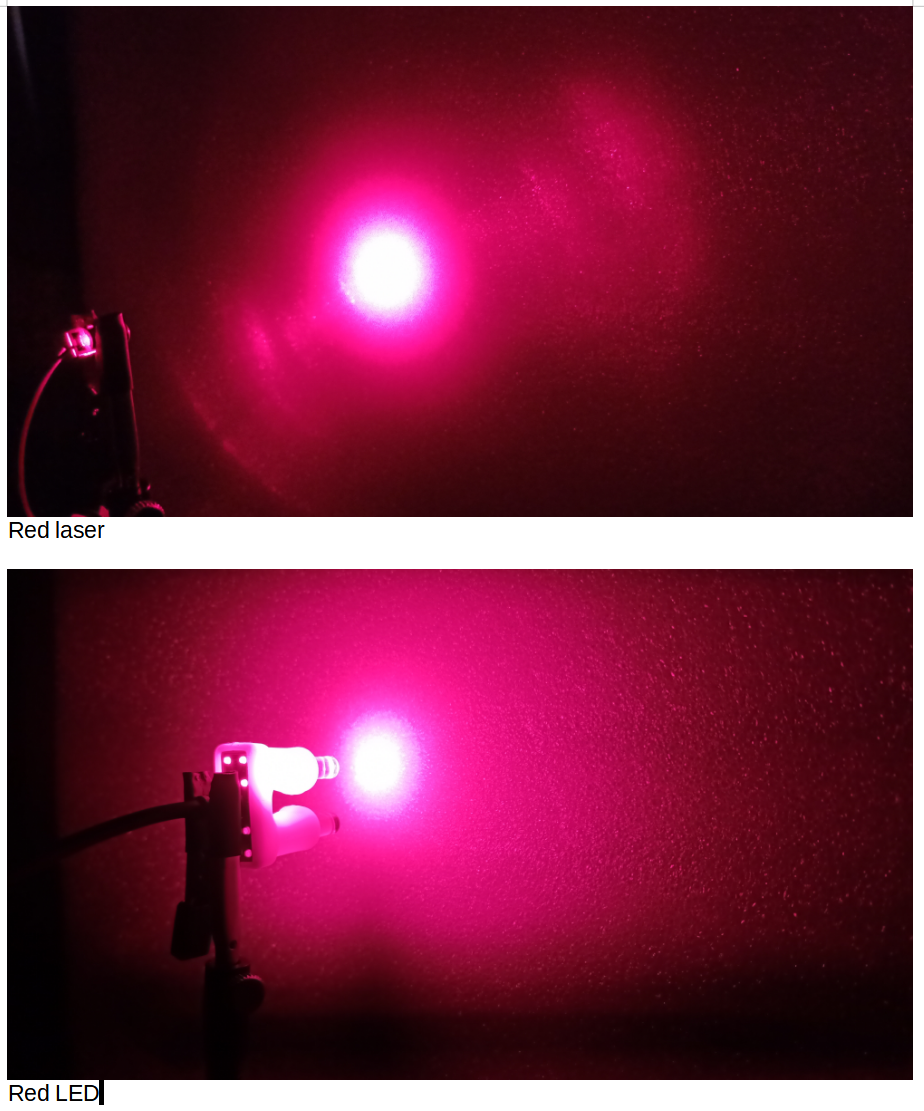Notes from the lab - another take on the LASER vs LED discussion
As is generally understood, LASER light is concentrated into a narrow beam in air and LED light diverges into an expanding beam of light.
This might lead one to believe that the LASER light would penetrate human tissue more deeply than LED light.
In order to investigate what might actually happen to the light, I conducted a little experiment using the CoroNase and a laser diode. As an analogue to human tissue, I used a sheet of the white foam that is used to pack the Coronet in its box. The photos show that the light from both sources immediately gets diffused as it passes through the medium. The same light pattern is seen on the other side of the foam sheet.
The photos have been normalised to show the diffusion of the light, although in reality, the LASER light is - by legal requirement - far less intense than the LED light, which is not limited by safety legislation.
This result would suggest that the penetration into tissue is solely dependent on the optical power of the source, which in this case is 1 mW for the LASER and 3,000 mW for the LED.
In the next “From the lab” post, I’ll be looking at the claim that light doesn’t actually penetrate human tissue deeper than a centimeter or so.
